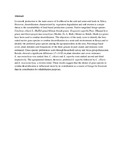Soil erosion monitoring and its implication in a limestone land suffering from rocky desertification in the Huajiang Canyon, Guizhou, Southwest China
Over the past decades, the vast limestone mountain areas in southwestern China have suffered greatly from karst rocky desertification (KRD), which is a unique type of desertification caused by irrational land-use practices and has drawn increasing attention of international academic community. Characterizing soil erosion in this region is the key to understanding the escalating KRD problem and finding solution to it. The authors applied leveling method to study soil erosion process in the Huajiang Karst Canyon area between 1999 and 2003, and tried to relate it to KRD expansion.


